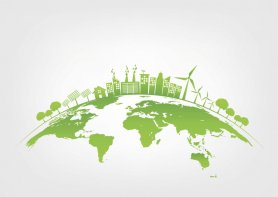
Integrating the UN Sustainable Development Goals into Your Learning Program
The word “Sustainability” is everywhere. Even Sustainability is trending on Twitter as I write this post, with 220 tweets including the hashtag (#Sustainability) in the last hour. That being stated, what does “Sustainability” really look like in action? Beyond our fundamental and immediate actions of recycling and reducing our carbon footprint, what actions need to be taken on a greater scale to strengthen our impact?
It is important for students to understand the global challenges that are being addressed by sustainability from a broader perspective. This is where the UN Sustainable Development Goals come into play and can be a valuable tool for students to better understand the needs that are being addressed (and why) through renewable energy, technology, policies, and improved food production. The Sustainable Development Goals serve as a universal call to action to end poverty, protect the planet and improve the lives and prospects of everyone, everywhere. The 17 Goals were adopted by all UN Member States in 2015, as part of the 2030 Agenda for Sustainable Development which set out a 15-year plan to achieve the Goals.
According to the SDG website, a website dedicated to providing resources and information regarding the UN Sustainable Development Goals, the goals are “the blueprint to achieve a better and more sustainable future for all. They address the global challenges we face, including those related to poverty, inequality, climate change, environmental degradation, peace and justice.”
The 17 Goals are completely interconnected and are set to be achieved by 2030. Those Goals are as follows:
- No Poverty – Put an end to poverty in all its forms.
- Zero-Hunger - The food and agriculture sector offers key solutions for development, and is central for hunger and poverty eradication.
- Health and Well-Being – From vaccinations to improved access to medical and health care, this goal is set to ensure healthy lives and promote the well-being for all (and at all ages).
- Quality Education – Quality education is the foundation for improving people’s lives
- Gender Equality – This goal aims for equality for all genders and female empowerment.
- Clean Water and Sanitation – Water scarcity affects more than 40% of the global population; reducing water waste is an essential component of this goal.
- Affordable and Clean Energy – Three billion people still lack clean cooking fuels and technologies.
- Decent Work and Economic Growth – Create job opportunities for youth.
- Industry, Innovation and Infrastructure – Roads, water, sanitation and electricity remain scarce in many developing countries.
- Reduced Inequalities - To reduce inequalities, policies should be universal in principle, paying attention to the needs of disadvantaged and marginalized populations.
- Sustainable Cities and Communities – 9 out of 10 urban residents breathe polluted air.
- Responsible Consumption and Production – This goal addresses the importance of responsible production with little to no waste.
- Climate Action – Climate Change is a global challenge that affects everyone, in every country; this goal addresses ways that we can take action now.
- Life Below Water – Over 3 billion people depend on marine and coastal biodiversity for their livelihoods. Avoid single-use plastic and plastic bags to keep oceans clean.
- Life on Land - Sustainably manage forests, combat desertification, halt and reverse land degradation, halt biodiversity loss.
- Peace, Justice and Strong Institutions – Stand up for human rights.
- Partnerships for the Goals – Achieving the goals could open market opportunities valuing as high as $12 trillion and create 380 million new jobs by 2030.
Not only are the UN’s Sustainable Development goals integrated with each other, but nearly all of the goals can be connected to the lessons and objectives of the AquaGrove “Learn and Grow”, as well as expanded and aligned with other sustainable and solar thermal technology programs available through Power Panel. Through aquaponics, educators can address goals including everything from food security and poverty to clean water and responsible consumption and production, and with the additional options for solar powered systems, goals including renewable and clean energy and sustainable cities and communities can be addressed.
The SDG website provides detailed information and resources, including a book club for children, that enable educators to clearly communicate the goals, as well as explore solutions with their students. Viewers may “click” on any specific goal listed on the website to learn more about each issue, as well as access useful infographics, links, facts and figures that can enhance current learning programs and start new ones.
To learn more about the UN Sustainable Development Goals, visit www.un.org/sustainabledevelopment. To gain information on aquaponics, the Learn and Grow system and/or solar thermal technology offered by Power Panel, contact us.
